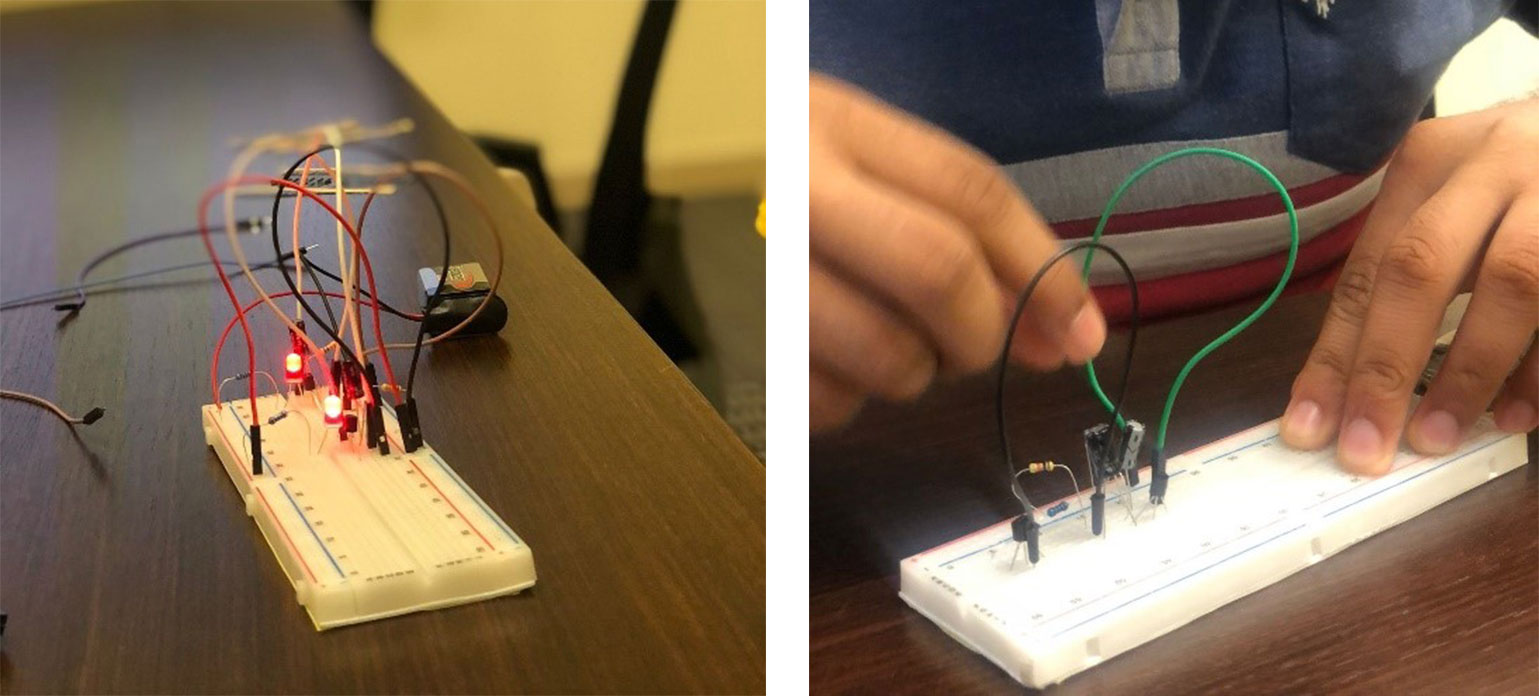Course overview
The course is about using basic electronic components to the electronic circuits. BJTs, FETs, resistors, capacitors, BJT amplifiers, Op Amp circuits, and sensory circuits will be covered in a week-long course. Assignments are designed to help the students to experiment with their understanding of the concepts being covered. Students will be encouraged to create innovative projects based on these electronics components and sensory circuits.
Course content
The program will facilitate course for high school students with the following learning content:
- Activity 1: “Basic Electronic Circuit Analysis “In this activity, student will learn the basic electronic components, construction and working principles.
- Activity 2: “Cascading multiple Transistors” In this activity, student will learn how the electronic circuit's output improves after cascading multiple transistors.
- Activity 3: “Interface Transistors and logic gates" In this activity, students will interface 555 timer IC, commonly used in most advanced electronics circuits.
- Activity 4: "Interface Sensors and Transistor" In this activity, different sensors will be interface using transistors and other essential electronic components by designing small projects.
- Design Project: Develop a Project using basic electronic components.
During the course, the students will develop the working circuits of the following products.

Objectives
The objectives of the summer course summarized in the following points:
- To familiarize the students with basic electronic concepts and circuit analysis.
- Acquaint the students with the most common components in electronics (resistor, capacitor, diodes, transistors, and integrated circuits).
- Provide the students with detailed working of each component through hands-on project-based learning.
- Offer the students with adequate knowledge in day-to-day familiar electronics applications.
- The course will enhance
Target Group
Grade 9, 10, 11, and 12
The learning standards mentioned below follow the Qatar Science Curriculum from the Ministry of Education and Higher Education (MOEHE).
- P1111.2: Draw and assemble potential divider circuits to investigate the properties of components like potentiometers, diodes, light-dependent resistors, transistors and thermistors.
- P1110.1-2: Working in pairs, students watch a video on "Transistors, how do they work?" and discuss the changes in the conductivity of semiconductors doped with certain impurities and explain how these can be exploited through pn and npn junctions.
- P1111.3: After watching videos on "logic gates" and "transistors", students research and discuss everyday applications of logic gates in practical electronic control circuits.
Benefits of this course
By the end of the course, the students will acquire the following benefits:
- Students will gain the skills to create electronic circuits for different applications.
- Students will experience project-based learning, thereby enhancing their research talent.
- The participating students will practice electronic engineering, thereby applying the scientific concepts learned in the classroom.
- The course has the capacity to enable the students to boost their competencies in teamwork, technical expertise, communication, inquiry, research, problem-solving and critical thinking.
Mentoring Team
Our QUYSC professionals, including scientists, research assistants, and engineers, will give participants an outstanding learning experience. To fulfill the course objectives, we will use practical tools and techniques to provide training and support.
Registration Fees
Fees are QAR 300 per student.